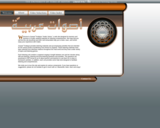
Encourage your students to creatively explore character building through practicing the 8 Efforts of Laban!
- Subject:
- Dance
- Fine Arts
- Physical Education
- Theater
- Material Type:
- Activity/Lab
- Interactive
- Author:
- Lorin Mello
- Date Added:
- 07/27/2022

Encourage your students to creatively explore character building through practicing the 8 Efforts of Laban!

Can you see how far you can catapult a Pom Pom? I want to see! We are going to be building a catapult from scratch. Your goal is to see if you can catapult your Pom Pom at least 3 feet.

How many food chains are there within this ecosystem? Let’s create some to find out! You will have 5 minutes to create as many food chains as you can with your partner. Please record your food chains on a sheet of paper as you go.

The space industry has been creating innovative technologies for decades. Students in this lesson will explore the world of space technologies and how they play a role in our everyday life.

Students will participate in multiple hands on activities with states of matter over several days.

The series of lessons allows students to review the concepts of mutations, adaptations and natural selection by studying a population of pocket mice through a video clip and then applying their knowledge through a simulation game.

First of two lessons on agriculatural tends in America. This one looks at the number of farms, average farm size, and amount of land in farms from 1850 through 2012.

Second of two lessons on agriculatural tends in America. This one uses ArcGIS online that follows simple step-by-step directions to create a web map. Students will learn how farm size, average farm output, and type of farming vary across the U.S.

This resource includes a student HyperDoc and associated "apply" task to ensure student understanding.Title: Allusion & Figurative Language LessonTopic: Literary Allusion & Figurative LanguageEducational Standards: SOL 9.3.eSubject Area: English 9

The American Academy of Pediatrics (AAP) recommends minimizing or eliminating media exposure, other than video chatting, for children under the age of 18 months. For older preschool-age children, media limits are very appropriate. Have a strategy for managing electronic media to maximize its benefits.

Psychological scientists examine potential beneficial and harmful effects of social media use on adolescents’ social, educational, psychological, and neurological development.

The first lesson of two on Ancient Rome, students examine physical maps of Rome to identify physical features that provided security for the site of Rome. In addition, students examine the relative location of Rome and its connections within the Mediterranean Basin and beyond. The second segment of the lesson examines the expansion of the Roman Empire through time and the role of physical features in facilitating or hindering that expansion. Key questions: What are the physical features of Rome?;
How did the physical geography of Rome influence its development?

The second lesson of two on Ancient Rome, students examine the geographic extent of the Roman Empire. The Orbis Web site, hosted by Stanford University, provides a map of the Roman Empire at its largest extent with the locations of key cities and transportation links. Key questions: How were places within the Roman Empire connected?; How did time and distance affect interactions within the Roman Empire?

Build rectangles of various sizes and relate multiplication to area. Discover new strategies for multiplying algebraic expressions. Use the game screen to test your multiplication and factoring skills!

Build rectangles of various sizes and relate multiplication to area. Partition a rectangle into two areas to discover the distributive property.

Build rectangles of various sizes and relate multiplication to area. Discover new strategies for multiplying large numbers. Use the game screen to test your problem solving strategies!

Aswaat Arabiyya is an archive of 245 videos in Arabic, listed by difficulty level and accompanied by glossaries and four worksheets each that focus on every aspect of listening comprehension. Selections come largely from Arabic media, with some cultural presentations by native speakers. Videos cover the entire Arabic-speaking world and include MSA and different dialects. Materials are designed to be used both as in-class activities and homework assignments. Videos can be slowed down.

In this activity, students will explore how the Law of Conservation of Energy (the First Law of Thermodynamics) applies to atoms, as well as the implications of heating or cooling a system. This activity focuses on potential energy and kinetic energy as well as energy conservation. The goal is to apply what is learned to both our human scale world and the world of atoms and molecules.

This resource consists of a Java applet and expository text. The applet is a simulation of the ballot experiment: The votes in an election are randomly counted. The event of interest is that the winning candidate is always ahead in the vote count.

To make the most of the Internet, kids need to be prepared to make smart decisions. Be Internet Awesome empowers kids with tools and education to confidently and safely explore, grow, and play online.